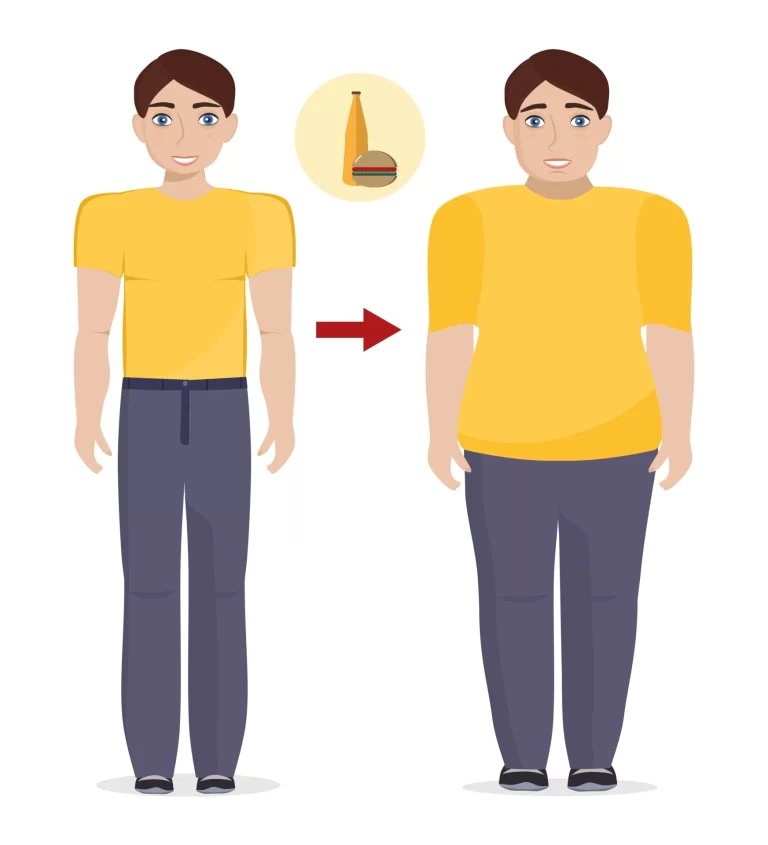How to Sleep with Peripheral Artery Disease?
Table of Contents
Introduction:
In America, nearly 6.5 million people over age 40 suffer from peripheral artery disease (PAD). It is caused by a fatty plaque accumulation that obstructs the arteries that provide blood to the extremities, typically the legs.
Even though symptoms of peripheral artery disease are most likely when the patient is standing, more severe cases may cause leg pain at night.
Leg pain is the most typical sign of peripheral artery disease (PAD). This can cause your legs to feel achy and cramp up, and it is particularly obvious when you are exercising.
Though less frequent, PAD pain can also happen when you’re sleeping. This may result in insomnia or other sleep-related problems, or it may make it difficult for you to fall asleep at night. In certain individuals, PAD may coexist with sleep disturbances.
In addition to managing your PAD, it’s critical to take care of your sleeping environment to avoid sleep issues brought on by this disease.
Here are some things you should know about if leg discomfort is keeping you up at night, along with information on the best sleeping positions for PAD and other related topics you may consider talking to your doctor about.
What is Peripheral Artery Disease?
Cardiovascular disease known as peripheral arterial disease (PAD) is characterized by decreased blood flow because of constricted arteries, which are the blood channels that supply blood from the heart to the body’s other organs. The feet and legs are where PAD usually manifests as noticeable symptoms.
Legs and lower extremities are the primary areas affected by peripheral artery disease. The constriction or obstruction of the blood arteries that transport blood from the heart to the legs causes the discomfort felt there.
It can be difficult to get adequate sleep if you have leg discomfort or other symptoms of peripheral artery disease (PAD), which is caused by restricted blood arteries that limit blood flow to your limbs. Likewise, several sleep disorders associated with PAD may do likewise.
Atherosclerosis, or the buildup of lipids and other debris from the bloodstream inside the arteries, is the most common cause of PAD. Though occasionally it affects your arms as well, it mainly affects the blood circulation to your legs.
The most frequent causes of PAD are overtiredness, smoking, high blood pressure, diabetes, high cholesterol, and natural aging.
One typical sign is a pain in the legs during activity that goes away after resting. Your sleep is among the other components of your health that are impacted by decreased circulation. Rest discomfort, which is usually a persistent dull aching or burning pain that gets worse when you lie flat, might develop as PAD gets worse.
The symptoms of peripheral artery disease might be lessened by understanding the ideal sleeping posture. However, it’s also time for you to get evaluated by a vascular specialist if you’re having leg pain at night.
Peripheral artery disease may obstruct our body’s most vital healing and recovery process during the night: restful, peaceful sleep.
Getting enough sleep is essential for everyone, but for people with PAD, it’s even more important to keep their bodies and minds rested. The best sleeping positions for those with PAD are supine (back sleeping) with the legs raised or side sleeping with the legs straightened and a pillow between the knees for improved blood flow and alignment.
Getting treated for PAD and any associated diseases will help you obtain the sleep you require.
Causes of Peripheral Artery Disease
Plaque accumulation in the arteries, or atherosclerosis, is the most frequent cause of PAD. Early on in its development, PAD may not exhibit any symptoms.
The most frequent causes of PAD are overtiredness, smoking, high blood pressure, diabetes, high cholesterol, and natural ageing.
According to the National Center for Biotechnology Information, peripheral artery disease affects between 12 and 14% of the population. Early diagnosis and appropriate treatment of peripheral artery disease might be facilitated by being aware of its symptoms.
There are four stages of peripheral artery disease presentation: claudication, critical limb ischemia, acute limb ischemia, and asymptomatic. With each stage of the disease, the symptoms of peripheral arterial disease will get progressively worse. The first stage of peripheral artery disease is thought to be asymptomatic, while the final and most serious stage is acute limb ischemia.
The following are a few typical causes of peripheral artery disease:
- Atherosclerosis, or the buildup of fat deposits
- Age
- History of the family
- Higher cholesterol levels
- Smoking too much
- Diabetes
- High blood pressure
- Severe tiredness
- Being overweight
- Cuts or injuries to the arm or leg
- Vascular inflammation
- Radiation exposure
- Modifications to muscles or ligaments
Signs and symptoms:
Are you curious about peripheral artery disease? According to physicians who specialize in vein care, more than 50 percent of patients with peripheral artery disease do not show any symptoms, which is why their PAD frequently reaches severe stages. The following are a few potential signs of peripheral artery disease:
- Walking-related aches, cramps, heaviness, or soreness in the legs are referred to as claudication.
- Cramps and aches, especially at night
- The foot or leg is pale, blue, or discoloured.
- Legs or feet that feel cold to the touch
- Rest pain is a burning-like footache that is frequently worsened by lying on one’s back.
- Slow-healing sores or lesions on the lower legs or feet
- Leg pain during athletic exertion
- Leg hair loss
- Apart from generating nocturnal leg cramps, leg pain, and discomfort during the day, these symptoms may pose a particular problem at night if they interfere with your quality of sleep.
Peripheral artery disease, often known as PAD, can have mild to severe symptoms. Certain individuals suffering from the illness “may have no symptoms at all”.
In other situations, it results in issues like:
Claudication: Exercise-induced leg pain typically affects the calf or thigh muscles. Patients usually report feeling heavy, cramping, or having a charley horse after walking a particular distance, according to Kirksey. “That pain… goes away when they rest, and they’ll feel it again when they walk a similar distance.”
Pain and different wounds: On your toes and feet, you might develop sores or ulcers. Even when you’re not moving, you could have pain in the front of your foot or in your toes. According to Kirksey, “those symptoms point to very severe peripheral arterial disease.” Additionally, those experiencing these symptoms may note that their feet and legs seem numb, chilly, or pale.
Tissue damage: In terms of PAD stages, critical limb ischemia (CLI) is the most dangerous. This is the condition in which your limb’s blood supply is so constricted that wounds cannot heal. You run the chance of needing an amputation at this point. Surgery is required to increase blood flow. Just 1% to 2% of PAD patients progress to this level. About thirty percent of them need amputation.
The Connection Between Sleep, Pain and PAD
There is a direct correlation between the quantity and quality of sleep you receive and heart health. Adults who suffer from insomnia, inconsistent sleep patterns, or routinely obtain less than seven hours of sleep per night are more likely to develop cardiovascular problems, including PAD. Obesity, Type 2 diabetes, and high blood pressure are further conditions linked to inadequate sleep.
People with PAD are more likely to experience sleep disorders such as obstructive sleep apnea and restless leg syndrome, which further disrupts their ability to sleep. Sleep quality might also be hampered by rest pain. This symptom occurs in the advanced stages of PAD and could indicate a condition that could kill limbs. You don’t have to put up with the suffering, though. Therapy may be beneficial.
Adults need seven hours or more of sleep per night to reap the following benefits, according to the US Office of Disease Prevention and Health Promotion:
- Prevention of illness
- Simpler maintenance of a healthy weight
- Reduced chance of developing major health issues including diabetes and heart disease
- Lowered tension and elevated emotions
- Greater mental clarity during the day
- PAD might interfere with restful sleep when lower limb discomfort wakes you up or keeps you up late at night. Additionally, sleep apnea—a breathing disorder that happens when your airway abruptly becomes obstructed while you sleep—and PAD are frequently associated with one another. Overweight people are more likely to suffer from this illness. The ideal resting posture for sleep apnea is on the side, much like with PAD.
Given the various chances of having your sleep interrupted, it’s critical to position oneself for success when sleeping. For those with PAD, the ideal posture can have a variety of advantages, including pain relief, enhanced blood flow, and a lower chance of health issues.
What Effects Does PAD Have on Sleep?
Your PAD can interfere with your sleep in three primary ways, depending on how severe it is:
Stay awake because of pain: Sleep quality won’t likely be impacted by mild PAD. However, if your peripheral artery disease is more severe, you will have pain even when you are immobile. This implies that it could happen at night and cause you to wake up. Your toes or feet tingling could also wake you up. Being upright or draping your legs over the edge of your mattress might be beneficial as it stimulates blood circulation in your lower extremities.
Sleep apnea: PAD-related sleep apnea is a disorder that causes sleep disturbances. “There is a direct correlation between obstructive sleep apnea, a sleep disorder characterized by recurrent nighttime awakenings, and Parkinson’s disease,” Kirksey says. “They will occasionally stop breathing or breathe very shallowly. Their sleep is disrupted by all those things. According to him, those who are overweight are more likely to have apnea.
Your oxygen levels fall when you stop breathing for a short while because of apnea. According to him, this results in inflammation throughout your body, which can impact your heart, the blood vessels in your brain, and the arteries that supply your limbs and legs. This causes artery scarring, which can lead to blockages and PAD.
PAD-related restless legs syndrome causes you to wake up. 10% to 20% of individuals with PAD also suffer from this sleep ailment.
Patients usually report having trouble keeping their legs still during the night. Additionally, Kirksey notes that they usually wake up when their legs move. “There is an association between peripheral arterial disease and restless leg syndrome, but it is not a definite.”
Best Sleeping Position for PAD:
So, when it comes to peripheral artery disease, what is the ideal sleeping position? For patients with PAD, side and back sleeping are recommended sleep positions. Leg elevation is a crucial component of both ideal sleep positions since it helps to prevent blood pooling and preserve normal blood flow during the night.
Raising the legs
The Cardiovascular Institute of the South states that raising the legs above the level of the heart at night can help avoid blood pooling, numbness, pain, and nocturnal leg cramps.
Try elevating your legs just a little bit above your heart level to help avoid blood clots in your legs while you sleep. Blood clotting can cause oedema and pain.
Raising the leg portion of your bed is all that’s required if your bed is adjustable. If not, though, you just need to gather a few cushions, so don’t worry. To get your ideal comfort level above the heart, adjust the number under your legs.
This facilitates better blood flow and reduces muscle strain, both of which reduce tension. Therefore, if you have swelling or discomfort during the day, the best sleeping position is to raise your legs.
Advice for Leg Elevation:
- Use cushions when you’re lying down.
- If at all possible, raise the lowest part of your bed to get the appropriate leg elevation.
- Throughout the day, try to get your legs moving frequently. Simple exercises like ankle circles and foot flexions are good.
- But remember that this posture alone may not be sufficient for controlling the illness. This implies that you must select a healthy lifestyle and take your prescription as directed by your doctor.
Having a back sleep (Supine position)
We have good news if you have PAD and sleep on your back naturally. For two reasons, one of the greatest sleeping positions for people with PAD is supine. Your weight is first distributed evenly, which promotes better circulation. Secondly, this is the most comfortable posture for elevating your legs.
Sleeping relieves blood vessel pressure because it distributes your weight evenly. As a result, it improves blood flow to your limbs and provides immediate pain relief. Furthermore, this peripheral artery disease sleep position eases stress in the neck and improves the quality of your sleep.
Make sure to rest on your back with a supportive pillow between your neck and knees in order to sleep in this position. To ensure that you get a good night’s sleep, it is recommended that you slightly bend your knees. Avoid utilizing a high pillow or an excessive number of pillows as they may be uncomfortable.
Don’t worry if you rarely sleep on your back or find it difficult to do so. With the help of our comprehensive back sleeping tutorial, you can learn how to sleep on your back. This is a sneak peek: When you go to bed at night, start by making a nest of pillows around your body. This will keep you from falling off while you’re asleep and improve your comfort and support.

Advice about sleeping on your back in the best possible way.
- Raise your legs on a pillow for support.
- Maintain a small bend in your knees to improve your quality of sleep.
- A high pillow should not be used since this may result in excessive neck flexion.
Side-lying Position Or Side Sleeping
One of the greatest and most pleasant sleep positions is on your side if you have peripheral artery disease. The blood vessels won’t be under any stress when you sleep on your side. As a result, it encourages healthy blood flow to your extremities.
As much as possible, sleep with your legs straight and ideally parallel to your body. This is to make sure that your lower extremities continue to receive blood flow. The “fetal position,” which involves folding your legs against your torso, should be avoided since it may restrict blood flow to your legs.
Your limbs’ ability to receive enough blood flow might lessen the tingling and pain that are brought on by peripheral artery disease. Furthermore, by maintaining your airways open while sleeping in this posture, you reduce your risk of developing sleep apnea.
Lie on your side with your head supported by a pillow to ensure that you are getting enough sleep on your side. To avoid neck strain, make sure the cushion you choose maintains your neck in alignment with your spine. Moreover, place a cushion, foam pad, pillow, or cushion between your knees to guarantee your spine.
This will relieve some of the pressure on your hips and help to guarantee a more comfortable alignment. A cushion positioned properly is essential for preserving alignment and comfort during sleep.
Advice for the Best Side Sleep Position:
- Align the head, neck, and spine with a supporting pillow.
- Put on compression stockings to enhance blood circulation and lessen limb oedema.
- To correct the spine and relieve strain on the hips, place a pillow between the knees.
- Make sure the shoulders, hips, and knees are all supported adequately by your mattress.
Sleeping Positions to Avoid:
Regarding peripheral artery disease, there are certain sleeping postures that are not optimal. To help with your symptoms and minimize future problems, you should avoid sleeping on your stomach and crossing your legs.
Because your legs are positioned lower than your heart by nature, sleeping on your stomach is not recommended if you have PAD because it may cause blood to pool. However, resting on your stomach can place too much strain on your neck and spine, which can be uncomfortable and restrict blood flow.
How you lie down may affect the blood flow in your limbs. Think about how bending a pipe can affect the water’s flow. However, blood flow will be easier while you sleep deeply if you are in the right position.
It takes more than simply a beautiful dream to have a good night’s sleep. When your body has adequate time to mend itself, it happens. Consequently, selecting the ideal sleeping position is not only comfortable but also the most effective means of saying goodbye to the discomforts associated with PADs.
For those of you who typically sleep on your stomach, here’s a tip: place cushions or extra blankets on each side of your body to keep yourself from rolling over while you’re asleep.
In keeping with the idea of maximizing blood flow, you should stay away from sleeping with your legs crossed. By obstructing blood flow to the lower extremities, crossing your legs can result in pain and numbness. Keep your legs apart by a pillow or straight to maintain comfort and relief during the night.
Peripheral artery disease patients endure long-term limb pain and discomfort; if the ailment is not addressed, it can result in serious consequences such as amputation or even death. Also, you can’t get a good night’s sleep because of this ongoing ache. These are the top sleeping positions for peripheral artery disease that reduce pain, enhance blood flow, and lower the chance of problems.
Does Sleep Quality Depend on the Type of Mattresses and Pillows?
For those with PAD, using cosy, premium pillows and mattresses can improve the quality of their sleep. Selecting the right pillow is essential to preserving your spine’s natural posture and increasing blood flow. Getting an ergonomic cushion that provides superior neck, head, and shoulder support is the best option. This can improve blood flow to your limbs and release pressure from blood vessels.
A high-quality mattress can provide adequate support, pressure reduction, and improved circulation while you sleep. Selecting a mattress that will evenly distribute your body weight, maintain good spinal alignment, and ease pressure spots is advised. To ensure that you can sleep comfortably, make sure the mattress you choose can provide a lot of support for your hips and legs.
For example, the best options for persons with peripheral artery disease are memory foam mattresses and contour pillows, which provide the necessary support and reduce pressure. In summary, it is ideal to choose a high-quality, ergonomic mattress and pillow that accommodates your preferred sleeping posture and provides adequate support.
Tips for Managing PAD and Getting Better Sleep:
- Stay active: Although the pain in your legs caused by PAD may make you want to walk less, make every effort to incorporate walking into your daily schedule. Getting plenty of exercise can help prevent PAD or reduce its symptoms. Walking is a great kind of exercise because it’s accessible to most people and can be done on a treadmill either indoors or outdoors.
- Consume heart-healthy food: Reducing caffeine intake before bed and maintaining a heart-healthy diet can enhance sleep quality and alleviate symptoms of peripheral artery disease.
- Change in lifestyle: Heart-healthy lifestyle changes can help delay or avoid PAD and other cardiovascular diseases. As you’re modifying your diet, think about cutting back on or giving up coffee consumption before going to sleep. Research indicates that caffeine consumption up to six hours before bedtime can cause sleep disturbances.
- Control your tension: If stress prevents you from sleeping, think about including deep breathing exercises and meditation into your nightly routine. You could find that it helps you relax and clear your mind, making it easier for you to fall asleep.
- Purchase a high-quality mattress: Would it be time to replace your mattress? It may be time for a switch if it is squeaky or creaking, or lumpy and bumpy. For the most advanced ergonomic engineering and incredibly supportive sleep possible. The Hyperlite Sheet Set’s cooling sheets offer the most breathability and comfort if you want to keep cool all night.
- Consult with your healthcare professional: As usual, make time for routine examinations and appointments with your primary care physician to receive advice that is specifically tailored to your situation. There isn’t one PAD-countering strategy that works for everyone, but your doctor may advise you on the best courses of action and therapies.
Summary
Try the previously mentioned peripheral artery disease sleep positions if you are experiencing symptoms of the condition and are finding it difficult to get enough rest. You can enhance the blood flow to your limbs by sleeping in the most comfortable posture for peripheral artery disease. In the end, this lessens discomfort and leg pain, enabling you to sleep well and receive the rest you need.
FAQs
Which sleeping posture is ideal for people with peripheral artery disease?
Supine (back sleeping) with the legs raised or side sleeping with the legs straightened and a pillow between the knees for improved alignment and blood circulation are the best sleeping positions for PAD patients.
Which type of exercise is most beneficial for peripheral artery disease?
One of the important exercises for PAD is walking. After you overcome the early difficulties, this low-impact exercise raises your heart rate and, in the long run, can help with mobility improvement. When you first start, you can feel a little uncomfortable, but that will pass as you walk.
Which posture improves blood flow while you sleep?
Even while there isn’t a single treatment that works for everyone who has PAD, there are some sleep positions that can greatly reduce discomfort and help with blood circulation. There are tried-and-true solutions that provide some level of comfort, such as side sleeping with the legs properly positioned above the heart.
Which diet is optimal for people with peripheral artery disease?
Chickpeas, beans, brown rice, almonds, popcorn, and dried fruits are among the foods high in dietary fibre. Overall, fruits, vegetables, lean meats, and healthy grains are some of the greatest meals to eat for PAD. Omega-3, polyunsaturated, and monounsaturated fats are all beneficial components of a PAD diet.
What is the final stage of PAD?
Phase Four: Acute Limb Ischemia
It is possible to compare this PAD consequence to a heart attack or stroke. Blood flow to the limbs abruptly stops when PAD gets severe enough to cause ALI, which results in severe pain and tissue destruction.
Reference:
- Best Sleeping Position for Peripheral Artery Disease – What You Need To Know: Midwest Institute for Non-Surgical Therapy: Vascular and Interventional Radiologists. (n.d.). Goke Akinwande, MD. https://www.mintstl.com/blog/best-sleeping-position-for-peripheral-artery-disease-what-you-need-to-know
- Cherney, K. (2024, February 1). What Are the Best Sleeping Positions If You Have Peripheral Artery Disease? Healthline. https://www.healthline.com/health/best-sleeping-position-for-peripheral-artery-disease#faq
- Sklar, S. (2023, December 6). Sleep Soundly: Best Sleeping Position for Peripheral Artery Disease. Charlotte Radiology. https://www.charlotteradiology.com/blog/best-sleeping-position-for-peripheral-artery-disease/
- Best Sleeping Position For Peripheral Artery Disease. (2024, February 22). Advanced Medical Group. https://advancedmedicalgroupnj.com/sleeping-position-for-peripheral-artery-disease/
- Benisek, A. (2021, October 20). Peripheral Artery Disease (PAD) and Sleep. WebMD. https://www.webmd.com/heart-disease/peripheral-artery-disease-sleep
- Elm, E. (2023, December 1). Discover Your Comfort Sleeping Position for Peripheral Artery Disease. Eli & Elm |. https://eliandelm.com/best-sleeping-position-for-peripheral-artery-disease/
- Sajjad, E., & Sajjad, E. (2023, July 26). Peripheral Artery Disease: Best Sleeping Position for Your Well-Being. Marham. https://www.marham.pk/healthblog/best-sleeping-position-for-peripheral-artery-disease/







